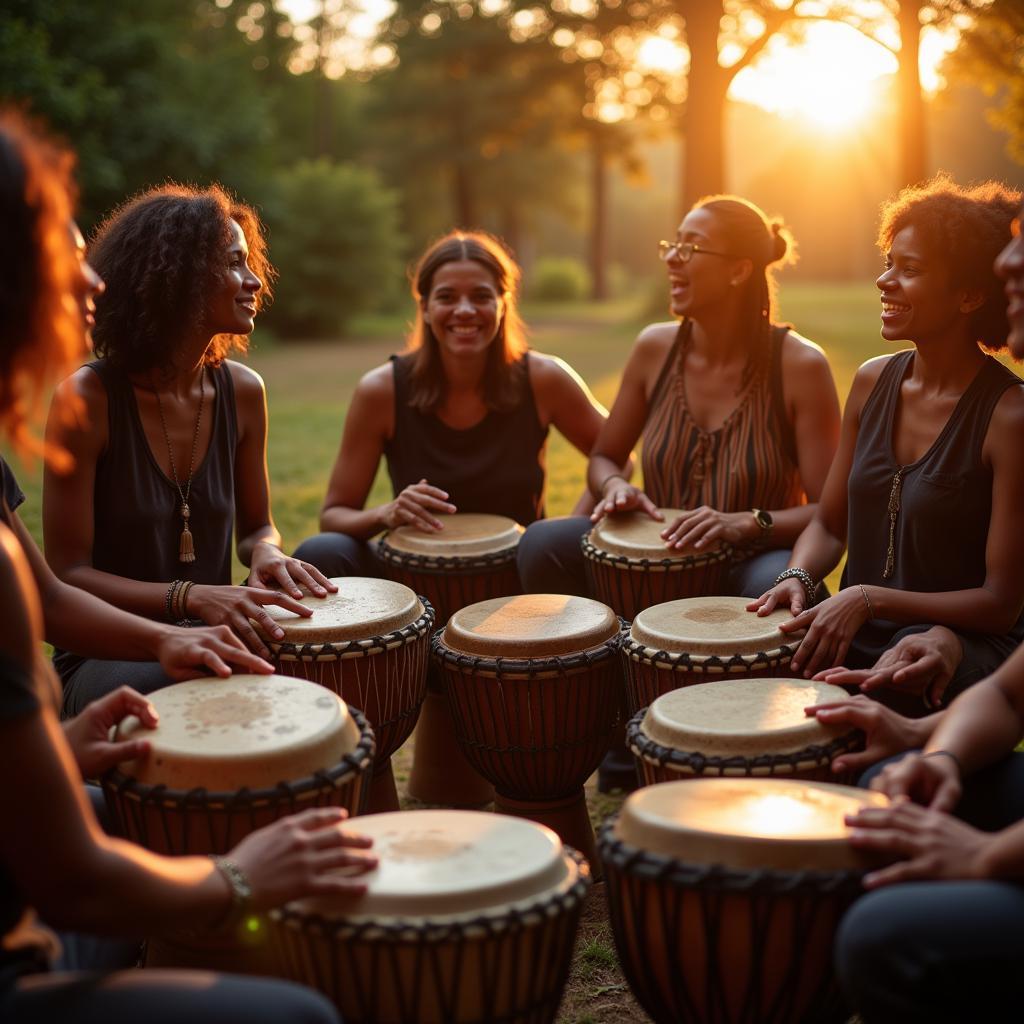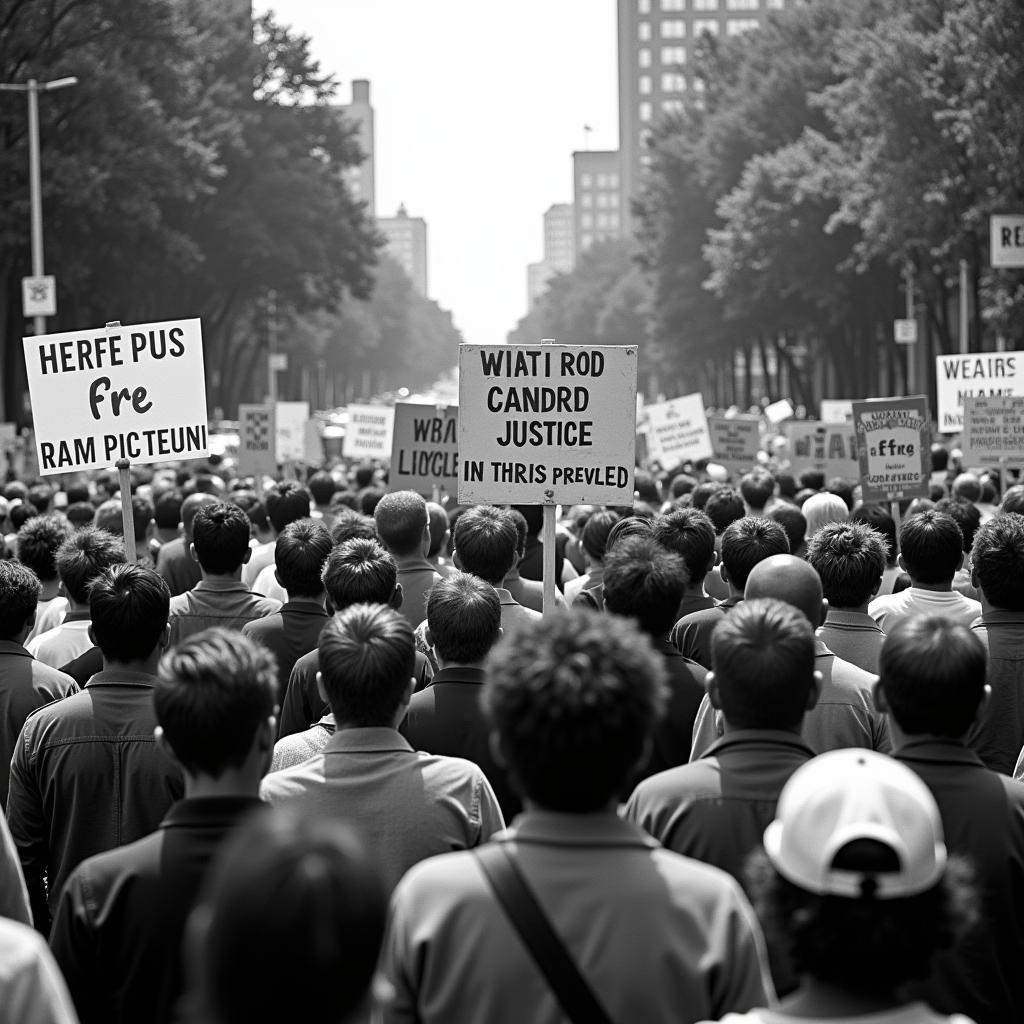Africa Festival Dance & Music From African Countries
Africa explodes with vibrant colors, pulsating rhythms, and exuberant dances, captivating hearts worldwide. African festival dance and music are more than mere entertainment; they are expressions of cultural heritage, social commentary, spiritual devotion, and pure joy. This article delves into the rich tapestry of African music and dance, showcasing the diversity and energy that defines the continent.
A Celebration of Life: The Essence of African Festival Dance and Music
 African dancers in vibrant costumes
African dancers in vibrant costumes
Music and dance are integral to African societies, transcending entertainment to become woven into the fabric of everyday life. Festivals, whether celebrating harvests, honoring ancestors, or marking rites of passage, provide a platform for these art forms to reach their zenith. The pulsating drums, melodic vocals, and intricate rhythms combine with expressive movements and colorful costumes to create a sensory experience that is uniquely African.
A Continent of Rhythms: Exploring the Diversity of African Music
From the hypnotic beats of West African drumming to the soulful melodies of East African singers, the musical landscape of Africa is as diverse as its people.
West Africa: The Heartbeat of the Continent
West Africa is renowned for its polyrhythmic music, characterized by the simultaneous use of multiple rhythms. Instruments like the djembe, talking drum, and kora create complex and captivating soundscapes.
- Djembe: This goblet-shaped drum, originating from the Mandinka people, is a staple in West African music, known for its versatility and powerful bass tones.
- Talking Drum: As its name suggests, this instrument can mimic the tones of human speech, adding a unique dimension to storytelling and communication.
- Kora: This 21-stringed instrument, a cross between a harp and a lute, produces delicate melodies that have enchanted listeners for centuries.
 West African drum circle performance
West African drum circle performance
East Africa: Melodies of the Savannah
East African music is characterized by its melodic vocals, often accompanied by string instruments like the oud and the nyatiti. Swahili lyrics, rich in poetry and storytelling, further enhance the emotional depth of the music.
- Taarab: This genre, influenced by Arabic music, features intricate melodies and poetic lyrics, often exploring themes of love, loss, and longing.
- Benga: Originating in Kenya, Benga blends traditional Luo music with Western influences like jazz and guitar, creating a vibrant and danceable sound.
Southern Africa: Rhythms of Resistance and Resilience
Southern African music reflects the region’s history of struggle and triumph. Genres like mbaqanga and kwela emerged during apartheid, providing a voice for the oppressed and a soundtrack for resistance.
- Mbaqanga: This energetic genre, often called “South African jazz,” combines Zulu vocal traditions with Western instruments, creating a powerful and uplifting sound.
- Kwela: Characterized by its distinctive pennywhistle melodies, kwela originated in the townships of South Africa, offering a message of hope and resilience during difficult times.
Language of the Soul: The Expressive Power of African Festival Dance
 African dancers in traditional attire perform on stage
African dancers in traditional attire perform on stage
Just as music varies across the continent, so too does dance. Each region has developed its own unique styles and traditions, from the energetic and acrobatic dances of West Africa to the graceful and rhythmic movements of East Africa.
More Than Movement: Storytelling Through Dance
African dance is more than just entertainment; it is a powerful form of communication. Dancers use their bodies to tell stories, convey emotions, and connect with the spiritual realm.
- Masks and Costumes: Elaborate masks and costumes are often incorporated into African dance, adding another layer of symbolism and visual spectacle.
- Call and Response: The interactive nature of African dance is often reflected in “call and response” patterns, where lead dancers initiate movements that are echoed by the group.
A Celebration of Community: Dance as a Unifying Force
African festival dance transcends age, gender, and social status, uniting communities in shared rhythms and joy. Whether participating or observing, dance fosters a sense of belonging and collective identity.
Experiencing the Magic: African Festivals Around the World
While nothing compares to witnessing the vibrancy of African festival dance and music in their native settings, numerous festivals around the world offer a glimpse into these rich cultural traditions.
- African Festivals Melbourne: These festivals provide a platform for the African diaspora to share their cultural heritage with the world, showcasing the diversity and richness of African arts.
Conclusion: A Tapestry of Sound and Motion
African festival dance and music offer a window into the soul of a continent, pulsating with life, rhythm, and a deep connection to its heritage. From the hypnotic drums of West Africa to the soulful melodies of East Africa, the diverse sounds and movements of Africa continue to captivate and inspire audiences worldwide. More than just entertainment, African festival dance and music are celebrations of life, expressions of identity, and powerful reminders of the unifying power of art.

